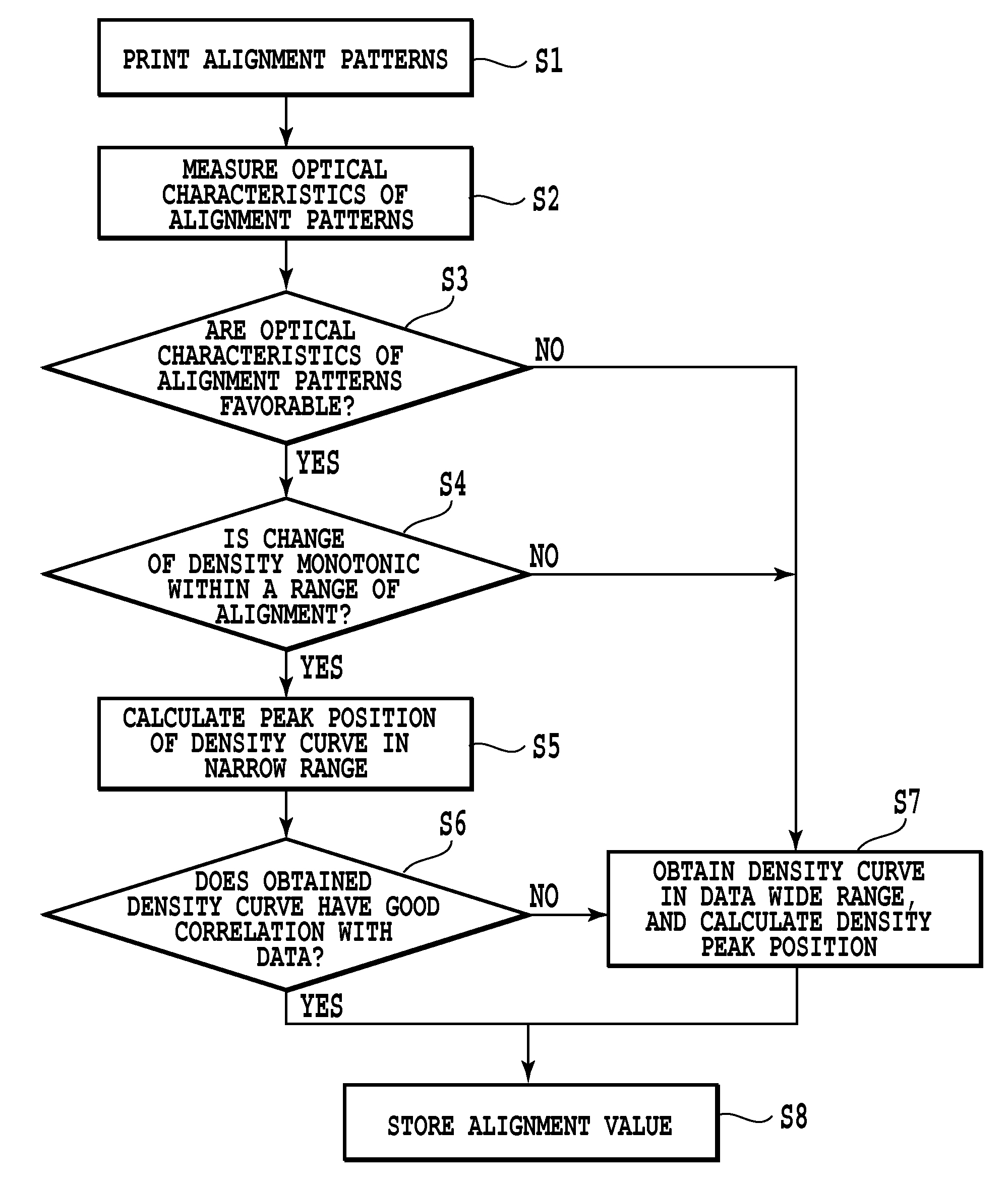Printing position alignment method and printing apparatus
a printing apparatus and position alignment technology, applied in printing mechanisms, spacing mechanisms, printing, etc., can solve problems such as deterioration of print quality, and possible misalignment of dot printing positions, so as to reduce the impact of external disturbance, the effect of effective alignmen
- Summary
- Abstract
- Description
- Claims
- Application Information
AI Technical Summary
Benefits of technology
Problems solved by technology
Method used
Image
Examples
second embodiment
[0090]Next, other embodiment to which the reliability determination is applied is described.
[0091]FIG. 9 shows procedures of processes of the determining reliability and the obtaining of an adjusting value in a second embodiment of the invention. In this embodiment, two groups of alignment patterns can be printed, and a second group of alignment patterns is printed in accordance with the reliability of data of a first group of alignment patterns. The first group of alignment patterns is for a coarse alignment satisfying an alignment range required for a mechanical tolerance of a printing apparatus. Meanwhile, the second group of alignment patterns, a unit of shifting of a relative printing position between alignment pattern elements is set smaller than that for the first group of alignment patterns so as to have a high accuracy of an alignment. In the first embodiment, as a result of a reliability determination, when the obtaining of an adjusting value with high accuracy and with le...
PUM
 Login to View More
Login to View More Abstract
Description
Claims
Application Information
 Login to View More
Login to View More - R&D
- Intellectual Property
- Life Sciences
- Materials
- Tech Scout
- Unparalleled Data Quality
- Higher Quality Content
- 60% Fewer Hallucinations
Browse by: Latest US Patents, China's latest patents, Technical Efficacy Thesaurus, Application Domain, Technology Topic, Popular Technical Reports.
© 2025 PatSnap. All rights reserved.Legal|Privacy policy|Modern Slavery Act Transparency Statement|Sitemap|About US| Contact US: help@patsnap.com



